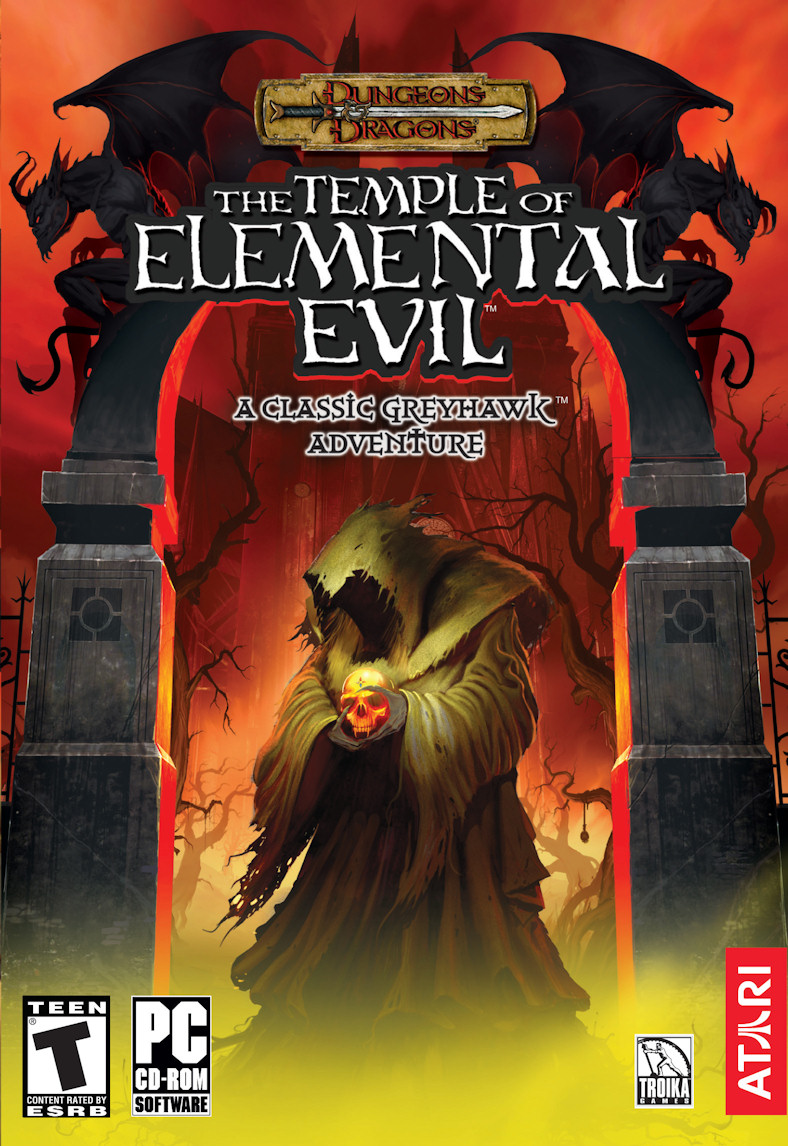The Temple of Elemental Evil Interview
-
Category: InterviewsHits: 5317

GB: In some of the screenshots, we've seen a dwarf wielding a flaming weapon. Are there quite a few items in the game that have magical effects like this? Can you give us an example or two of some of the more powerful ones?
Tim: Yes, we have implemented most of the weapon special abilities in the DMG, since we allow players to use the Craft Magic Arms and Armor feat. In the default party we are testing with, the dwarf carries a flaming greataxe, and the elf is carrying a longbow of frost.
GB: Would you say that most items in the game are purchased from merchants, or found while adventuring? Are you using a random table for item drops, or will they be static?
Tim: Most items are found while adventuring, but some of the best items will not be placed at all. The player will have to make them, with the appropriate feat. Most of our placed creatures have a defined inventory, but we do allow random item drops on randomly encountered monsters.
GB: Will players be able to utilize some of the powerful artifacts from the original module (Fragarach, Orb of Golden Death, etc) at some point in the game?
Tim: Yes, we have converted the artifacts into the 3.5 rules and placed them in the game. However, the player may have to make a tough decision before being able to use a particular artifact.
GB: How will inventory management work in the game? Will each character have a specific encumbrance based on his or her strength?
Tim: In inventory, every item takes up the same space but its weight will be totally and applied to an encumbrance that is based on the character's strength. Some items will stack, such as gems and potions and scrolls, and money both stacks and is weightless.
GB: In the original module, certain spells wouldn't function (or functioned differently) in the elemental nodes. Can you tell us a bit about these elemental nodes and how much of a challenge (if any) they were to implement into the game?
Tim: Actually, we did not implement the special spell rules for the elemental nodes. We ran out of time, and we had the choice to either get rid of the rules or get rid of the nodes altogether. We decided to keep the nodes. Each node is its own little pocket universe made primarily of one type of material: air, earth, fire or water. Each node has some peculiar inhabitants that are found nowhere else in the game, and some interesting items to acquire.
GB: How many NPCs capable of joining the player's party do you plan on implementing into the game? If a player decides to add an NPC, but the party is already full, can you replace one of your party members and send them back to Hommlet to wait for you?
Tim: We have over 30 different NPC's that join the party for different reasons, not counting animal companions and summoned/animated/charmed creatures. You are limited to three NPC followers at one time, and many will object to you ejecting them from the party in the middle of a dungeon. You will need to take them back to the surface or a nearby village, and they will eventually find their own way back home.
GB: It must be fairly difficult converting a 1st Edition module entirely to 3rd Edition. Have you had to deviate from the original module at all during the implementation of some of the side-quests, monsters, NPCs, or magic items?
Tim: Yes, but we have tried to deviate as little as possible. We wanted the experience to be as close to the module as we could make it.
GB: Finally, if you had to pick one location, battle, or quest in the game that is your particular favorite, which would it be and why?
Tim: I like the bottom dungeon level of the temple. It's really beautiful (our artists are wonderful), and it's got a lot of interesting encounters, both combat and non-combat. And it's deadly as hell, too. :)
Our thanks to Infogrames for setting up this interview and to Tim for answering our questions!


